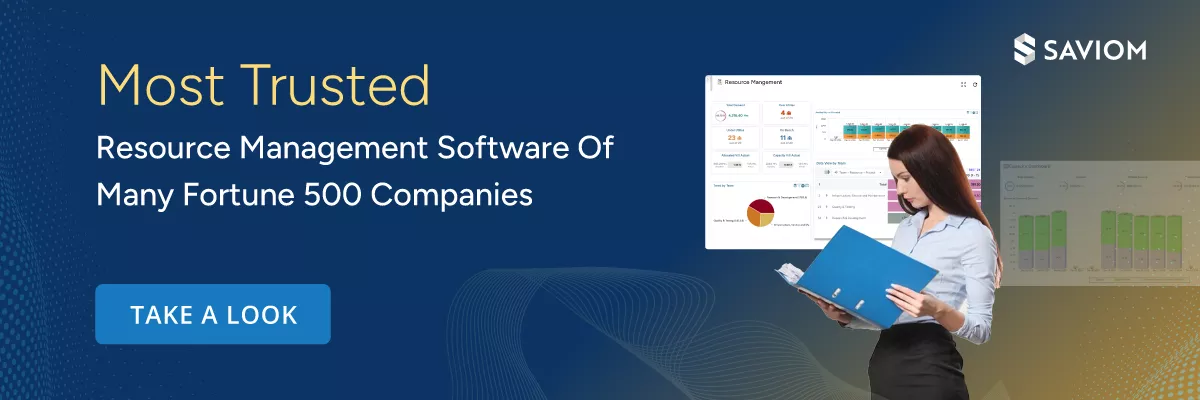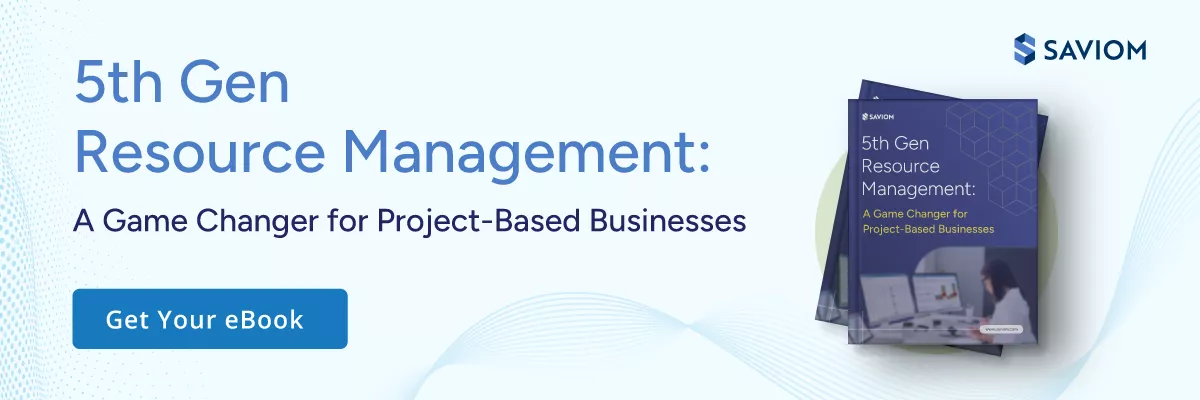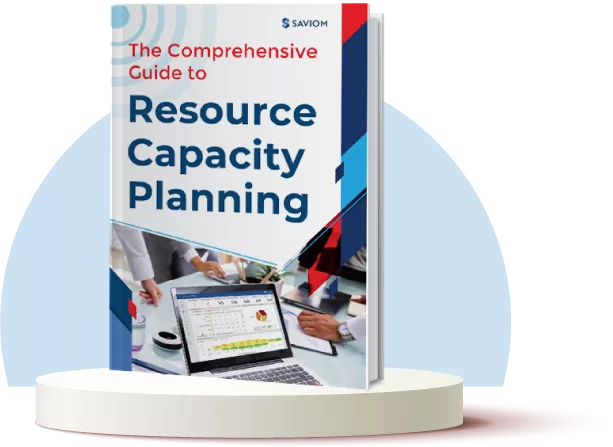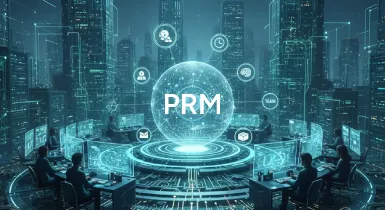“A goal without a plan is just a wish.” ~ Antoine de Saint-Exupéry
This quote perfectly exemplifies the importance of planning when it comes to managing your resource pool. Even the most skilled and capable resources can underperform when there is no structured plan guiding their efforts. Without a clear approach, managers often struggle to forecast resource demand accurately, allocate resources effectively, and optimize their utilization. For this very specific reason, having a resource management plan is a necessity and not an option.
A well-crafted resource management plan enables organizations to align their resources with project and business goals. It helps define roles, assign responsibilities, and set the right priorities. As a result, firms achieve smoother project delivery, enhanced operational efficiency, and improved profitability.
In this blog, we will explore what a resource management plan is and the steps involved in creating one.
Let’s start.
What is a Resource Management Plan?
A resource management plan is a strategic process that outlines how an organization identifies, forecasts, allocates, and optimizes resources, such as personnel, equipment, finances, and materials, during the project lifecycle.
It ensures that the right resources are available for the right opportunities at the right time and at the right cost. The primary goal of a resource management plan is to help firms reduce resourcing costs, enhance project delivery, and maximize operational efficiency.
Now, let us move on to know about the steps to build an effective resource management plan.
How to Build an Effective Resource Management Plan?
A resource plan is essential for streamlining planning and resource management. Here is how to build a robust project resource management plan:
Define Project Scope & Objectives
The first step of creating a robust project resource plan is to understand the project scope and objectives. It involves defining key deliverables, timelines, and milestones, quality expectations, exclusions, and inclusions, which helps establish what, when, and how many resources will be required throughout the project lifecycle. With well-defined objectives, it becomes easier to forecast demand, plan resource availability, and make informed adjustments when unexpected changes arise.
For instance, in a construction project, clearly defining the scope could mean breaking the project into two phases: Phase 1 focusing on structural works, core MEP, and shell handover, and Phase 2 covering façade finishes, landscaping, and parking. By establishing this upfront, managers can identify the required resources for each phase, allocate resources accordingly, and avoid last-minute firefighting. This structured approach makes it easier to monitor resources and project progress, ensuring timely delivery.
Estimate Project Resource Requirements
The next step is to identify the type, quantity, and quality of resources needed to complete the project successfully. Managers can estimate the effort in hours, days, or FTEs required for each phase. Accurate resource estimation helps align allocation with project timelines and milestones, ensuring the right people and assets are assigned to the right tasks. This minimizes resource shortages, reduces dependency on costly last-minute hiring, and sets a realistic baseline for project deliverables.
For example, in a software development project, managers may start by identifying essential roles such as front-end developers, back-end developers, UI/UX designers, and QA testers. They can then estimate the effort required for key tasks, like coding a feature, designing user interfaces, or testing modules, and determine the number of hours or days each will take. Based on this estimation, they can allocate the right number of people for each task, ensuring resources are available when needed and the project stays on schedule.
Continue reading: What are Project Resources? How to Manage Them Effectively?
Plan & Forecast Resource Demand
Once the total resource requirements have been estimated, the next step is to look into internal and external channels to assess whether the requisite skills are available. For this, managers can perform capacity planning to evaluate current workforce capacity and compare it against the project demand to identify whether there is a resource excess or shortage. This analysis helps firms forward plan and acquire the necessary resources ahead of the curve, preventing project delays.
For example, in an IT implementation project, managers may identify the need for five software developers, two QA testers, and a technical lead over the next quarter. Through forecasting and capacity planning, they find that only three developers and one tester are available internally, resulting in a resource shortfall. Accordingly, they can decide the next step of action to bridge this demand gap before the project begins.
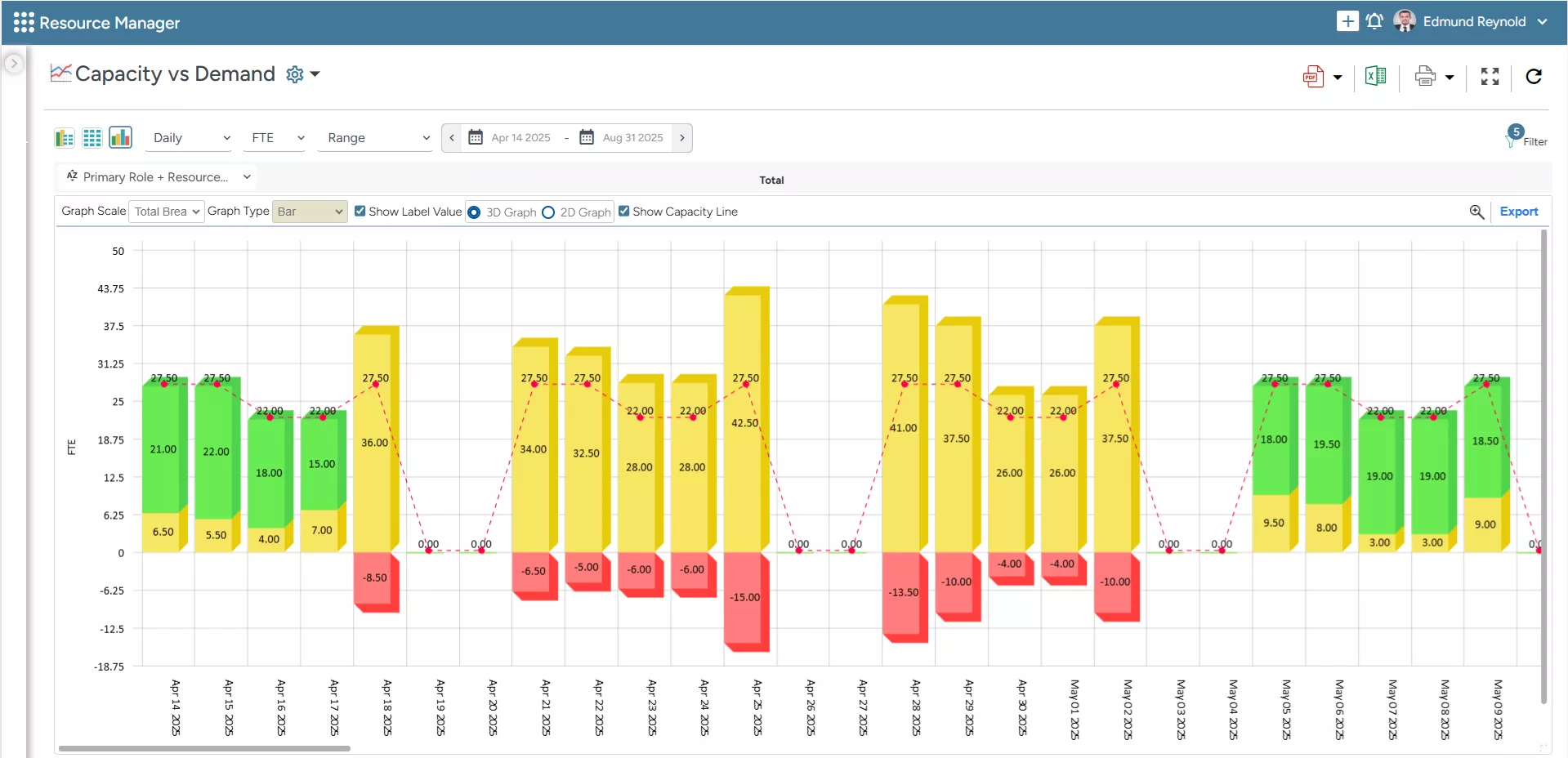 SAVIOM’s Capacity vs. Demand Graph helps managers spot resource surpluses or shortfalls in advance and take proactive steps to close the gap.
SAVIOM’s Capacity vs. Demand Graph helps managers spot resource surpluses or shortfalls in advance and take proactive steps to close the gap.
Optimize Resource Capacity Against Demand
Once demand gaps are identified, the next step is to take corrective actions to optimize resource supply to meet demand. For resource shortages, organizations can implement measures such as cross-training and upskilling, out-rotation and backfilling, or hiring contingent staff. Alternatively, they can redistribute workloads, bring forward pipeline initiatives, or sell excess capacity at discounted rates to address excess capacity.
For example, in a consulting firm, if there is a shortage of analysts for an upcoming client project, managers might temporarily reassign analysts from a low-priority engagement. At the same time, they can arrange for competent junior resources to replace the analysts in the ongoing project. This approach balances supply with demand, optimizing the utilization of the existing workforce.
Continue reading: What is Resource Capacity Planning? An Ultimate Guide for Managers
Allocate Resources Effectively
The following step is to allocate resources effectively to ensure the right people are assigned to the right tasks at the right time. This involves considering critical attributes such as skills, availability, location, interests, cost, and role, to prevent the allocation of under- or overqualified resources to mismatched tasks. Furthermore, managers can consider resource interests, preferences, and career goals while assigning tasks to ensure higher productivity and engagement. Through effective resource allocation, firms can ensure high-quality deliverables and on-time project completion.
For example, in a product launch project, managers can allocate senior designers to handle critical branding tasks during the early stages while assigning junior designers to create supporting materials like brochures and social media graphics. At the same time, they can schedule the marketing team to focus on content creation first and shift them to campaign execution closer to launch. This thoughtful allocation ensures that high-value tasks are handled by the most skilled resources while the workload is distributed efficiently across the team.
Track & Optimize Resource Allocation
After resources have been allocated, it’s essential to continuously track their future and current utilization to ensure alignment with project goals. It helps managers identify signs of overallocation and underutilization early on. Based on that, they can implement optimization techniques such as resource leveling and smoothing to balance workloads and prevent burnout and disengagement. This ongoing optimization mitigates resource-related risks, minimizes costs, and maintains the resource health index.
For example, in a consulting project, managers track resource utilization and observe that senior consultants are spending excessive hours on administrative tasks while junior consultants have lighter workloads. Accordingly, they can delegate routine tasks to junior staff, freeing up senior consultants to focus on strategic client deliverables. This adjustment enhances productivity while ensuring resources are utilized according to their expertise and capacity.
Explore further: What is Resource Smoothing? Steps, Examples, Pros & Cons
Monitor Key Performance Indicators
Monitoring key performance indicators (KPIs) is crucial to evaluating the effectiveness of your resource management plan. Hence, resource managers must track KPIs like utilization, availability, forecast accuracy, etc., in real time. They compare these metrics against baselines to spot deviations, such as overutilization or cost overruns. This allows them to make data-driven decisions to enhance both project outcomes and resource planning.
For example, in a software development company, real-time KPI monitoring may reveal that a team’s workload has spiked due to an unplanned feature request. To address this, managers can quickly redistribute non-urgent tasks to other teams or temporarily onboard additional developers. Such data-driven decisions help prevent burnout, keep the project within budget, and ensure high-priority deliverables are completed on time.
Optimize Resource Utilization and Cost
Optimizing resource utilization and cost is about ensuring that every resource is used to its maximum potential while keeping project costs under control. For that, managers should forecast billable, non-billable, strategic, low, and high-value resource utilization to detect inefficiencies early. They can then shift resources from non-billable work to strategic, revenue-generating tasks. This will minimize bench time and prevent overutilization, maximizing productivity and reducing billable losses.
Moreover, by aligning skilled resources with high-value initiatives, organizations can maximize ROI and project outcomes. For example, in a construction project, the manager notices that equipment operators are underutilized while subcontractor costs are escalating. By redistributing their workload and negotiating better terms with vendors, they can reduce unnecessary expenses while maintaining smooth operations. This ensures that both human and non-human resources are utilized efficiently without inflating project budgets.
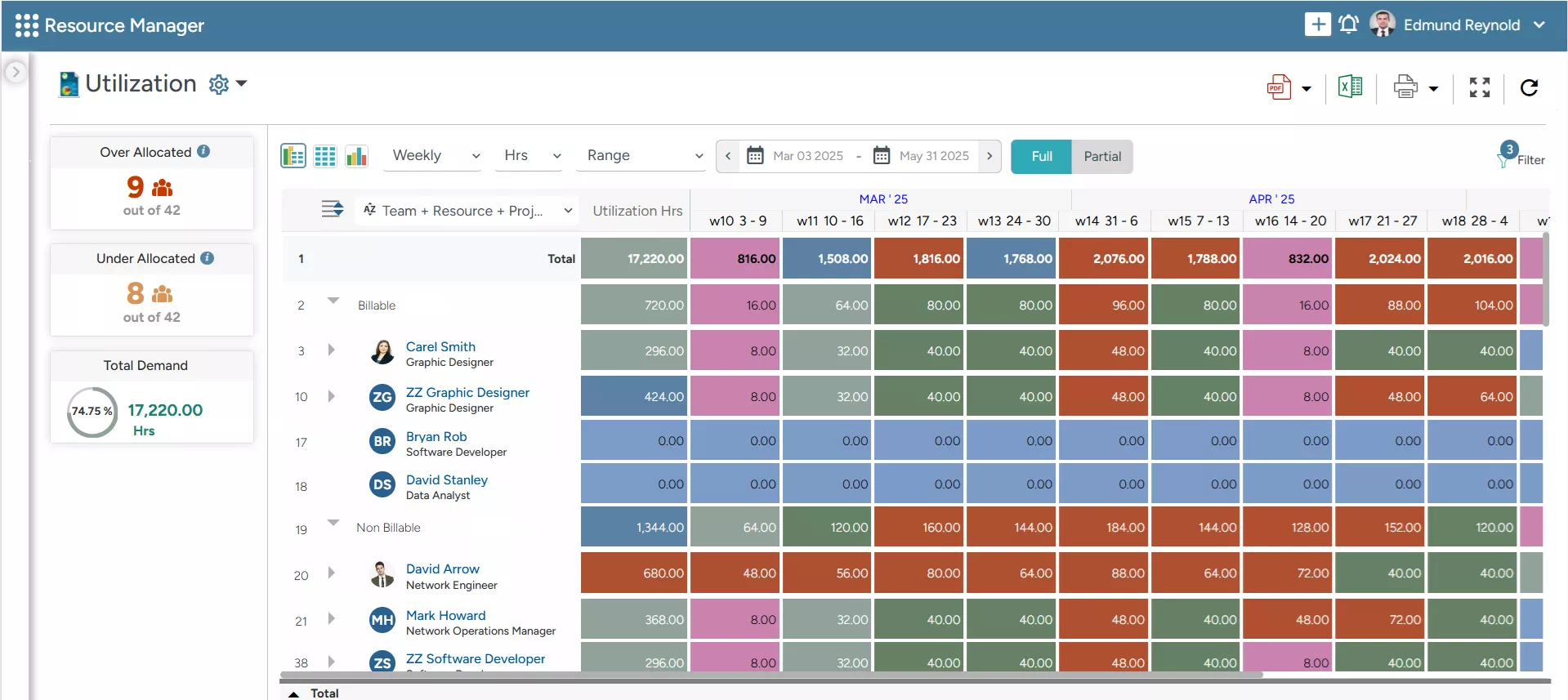 SAVIOM’s Color-Coded Heatmap highlights the utilization levels of every resource, enabling managers to identify imbalances and enhance productivity.
SAVIOM’s Color-Coded Heatmap highlights the utilization levels of every resource, enabling managers to identify imbalances and enhance productivity.
Looking to dig deeper into resource utilization? Check out these recommended reads:
- How to Improve Resource Utilization with 7 Effective Steps?
- How to Measure and Track Resource Utilization Effectively?
- How to Measure Different Types of Resource Utilization? A Quick Guide
Foster Communication and Collaboration
As per a 2024 report by State of Internal Communications, “75% of employees assert that effective communication creates stronger alignment to business goals.”
Effective communication is the key to maximizing the efficiency of a resource plan. For this, managers need to establish a centralized communication channel to share real-time updates on project and resource metrics. Moreover, well-defined communication protocols foster effective collaboration between managers, leads, and team members, ensuring alignment with project and business priorities.
For example, in a consulting project involving cross-functional teams across three regions, managers can implement daily stand-ups and status meetings to keep everyone informed of progress and changes. This practice ensures consultants, analysts, and clients stay aligned, share critical updates instantly, and resolve dependencies before they escalate. As a result, projects move forward smoothly, and resource-related risks are minimized.
Take a quick peek at this infographic: 9 Key Steps to Create a Resource Management Plan
Let us now move on to how our tool helps in creating an efficient resource management plan.
Create an Efficient Resource Management Plan with SAVIOM
Here are a few reasons why SAVIOM is a great choice for building a resource management plan:
All-in-One Resource Planner
The all-in-one resource planner of SAVIOM’s resource management tool serves as a central hub for various robust functionalities like:
- The multi-dimensional analysis offers 360-degree visibility into all resource-related data, like skill, location, costs, etc., along with current and upcoming project resource schedules, helping managers build an effective resource management plan.
- The embedded color-coded heatmap functionality helps spot resource over-/underutilization, enabling managers to take corrective measures like workload balancing.
- The intelligent matchmaking feature helps managers assign the right resource to the right task at the right time and cost, facilitating competent allocation across projects.
- The early warning system flags risks such as double bookings or overallocation, enabling managers to take proactive action before any disruption occurs.
- The KPI forecaster helps managers track and assess various key metrics like capacity, utilization, availability, people-on-the-bench, etc., enabling informed decision-making.
Multi-Dimensional Resource Forecasting and Capacity Planning
SAVIOM’s robust, multi-dimensional resource forecasting capabilities help managers foresee pipeline project demands across various dimensions, including departments, teams, locations, line managers, etc., to determine resource requirements accurately. With comprehensive capacity vs. demand analysis, managers can anticipate resource excesses/shortages and take proactive measures to bridge the gap and ensure seamless project initiation.
It also enables firms to forecast various metrics, such as supply, demand, revenue, and utilization, across projects. Accordingly, managers stay proactive and take necessary measures ahead of time to optimize resource utilization, reduce unnecessary costs, and maximize business profitability.
Dive deeper: What is Capacity Planning? A Guide to Maximize Business Efficiency
Resource Optimization
The tool’s optimization module ensures that organizations identify and leverage the right resources at the right time and cost throughout the project lifecycle. It provides comprehensive insights into critical KPIs like resource utilization in real-time. With continuous monitoring, managers can proactively detect variances and take corrective actions in advance. This helps firms maximize productive resource utilization, improve workforce performance, and boost profit margins.
What-If Analysis
With the tool’s advanced what-if or scenario modeling features, managers can simulate different workforce scenarios in a sandbox environment, compare potential outcomes, and arrive at the most favorable resource plan. It safeguards businesses against resource-related risks, such as resource shortages, budget constraints, and shifting priorities, helping to ensure seamless project progression even in the face of uncertainties.
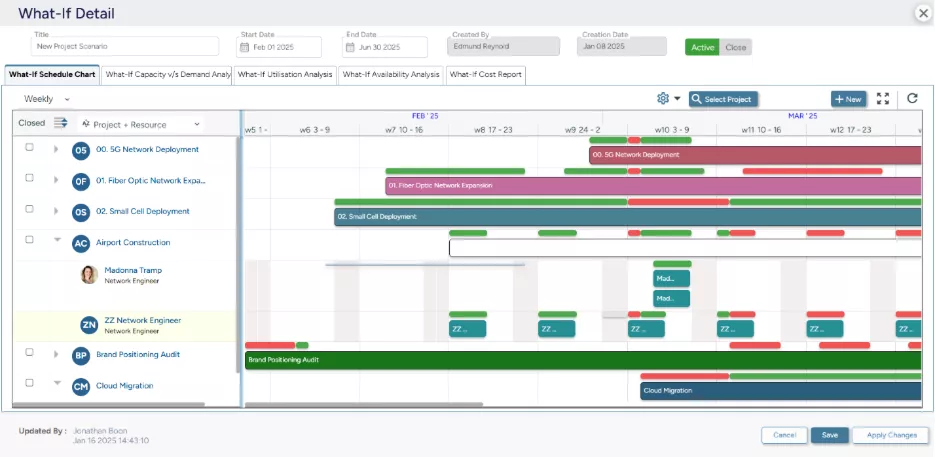 SAVIOM’s What-if Analysis helps managers evaluate different resource plans and choose the option that delivers the most profitable results.
SAVIOM’s What-if Analysis helps managers evaluate different resource plans and choose the option that delivers the most profitable results.
Real-Time Business Intelligence
SAVIOM offers state-of-the-art real-time BI reports, dashboards, & analytics that help managers and other stakeholders identify project inefficiencies, resource risks, utilization patterns, etc., at a quick glance. This enables them to make data-driven decisions for the resource management plan to ensure seamless project execution.
Highly Configurable and Adaptable Solution
SAVIOM offers a highly configurable solution allowing businesses to fully customize based on the unique requirements, like workflow, approval hierarchies, reporting, etc., enabling smooth operations. Moreover, it scales seamlessly to manage increased workload and data volumes, thereby ensuring proper resource management.
Pioneer and Market Leader of Resource Management
With over two decades of expertise, SAVIOM is a trusted name in the enterprise resource management space. Partnering with Fortune 500 companies like Honeywell, Fujitsu, ABB, Siemens, Verizon, and Air Products, our solutions help global enterprises optimize resource utilization, streamline project delivery, and achieve their strategic goals.
Conclusion
A well-structured resource management plan is the key to efficient project initiation. It helps businesses monitor project demand, identify resource risks, allocate effectively, maximize utilization, and control costs efficiently. Thus, it ensures that the project is initiated on time and that resources are used to their full potential.
